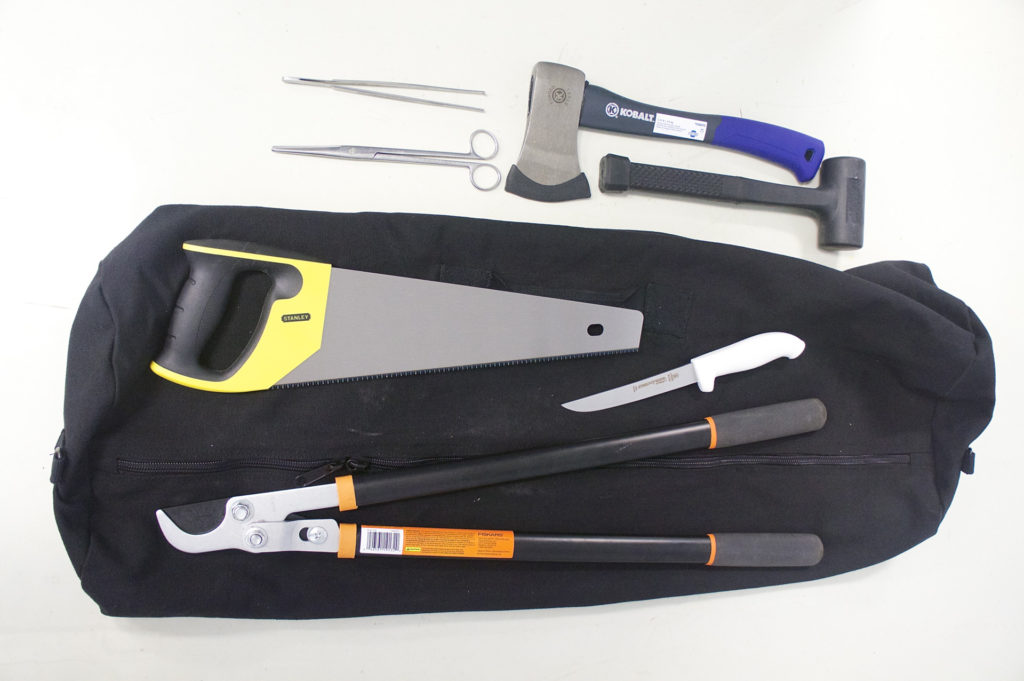Diagnosing animal diseases frequently requires a veterinarian or a technician to collect specimens in the field. This can be difficult without having the right tools on hand. For these occasions, the Texas A&M Veterinary Medical Diagnostic Laboratory suggests assembling a necropsy field kit.
The kit should include the following tools and materials, all of which are available from a hardware store:
- A 15-inch crosscut saw with a coarse blade.
- Pruning loppers, 29 to 31 inches.
- A dead-blow mallet.
- A camping hatchet.
- A boning knife).
- One box of quart-size re-sealable bags.
- One box of gallon-size re-sealable bags.
In addition, include a set of surgical scissors and forceps along with personal protective equipment, such as gloves and eyewear. Also, wrap the tools with sharper edges in old towels to protect the other tools as well as your hands.
The tools may be stored and carried in a military-style tactical bag or in a large duffel bag. The bag should be at least 32-inches long to contain the pruning loppers, and should including a shoulder strap for easier carrying.
All together, the kit should cost between $120 and $150 to put together.
To download a printable version of this information, click here.
For more information about TVMDL’s testing options and services, visit tvmdl.tamu.edu or call the College Station laboratory at 1.888.646.5623 or the Amarillo laboratory at 1.888.646.5624.
